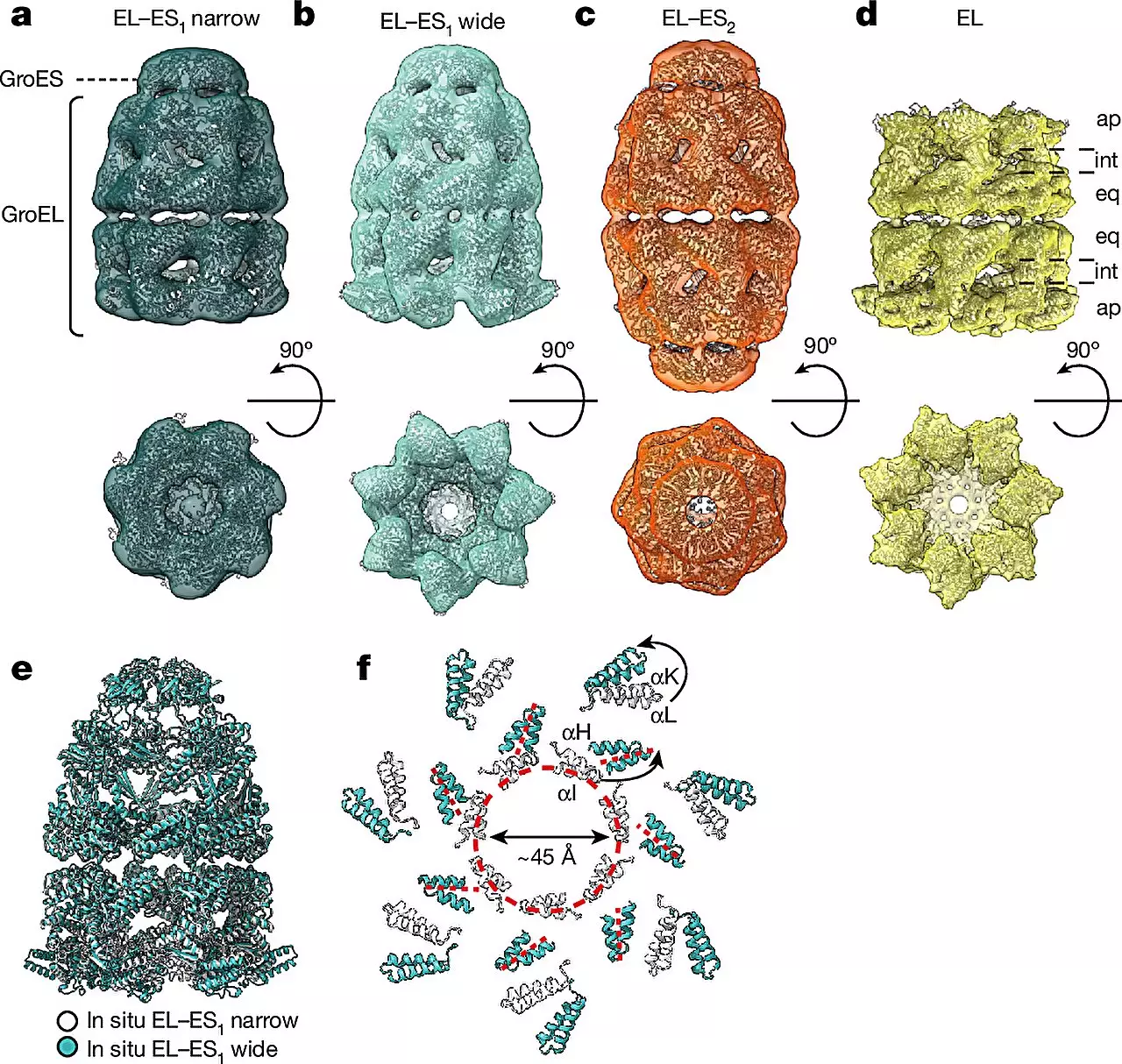Proteins play a crucial role in the functionality of living organisms. The way in which proteins fold into their correct structures is paramount to their proper functioning. In a recent study conducted by researchers at the MPI of Biochemistry in Martinsried and the University Medical Center Göttingen, cryo-electron tomography (cryo-ET) was employed to investigate the mechanisms of protein folding by chaperonin complexes in the bacterium E. coli.
Chaperonins are protein folding assistants that aid newly synthesized proteins in achieving their proper functional form. They are essential for ensuring that proteins fold correctly, as misfolded proteins can lead to diseases such as Alzheimer’s and Parkinson’s. The study, led by biochemist F.-Ulrich Hartl, sought to delve deeper into the structure and function of chaperonins in order to potentially develop new strategies for treating these diseases.
The Research Methodology
Collaborating with structural biologists Wolfgang Baumeister and Rubén Fernández-Busnadiego, the researchers utilized cryo-ET to observe chaperonin complexes at a level of detail that was previously unattainable. By combining cryo-ET with single-particle cryo-electron microscopy (cryo-EM) and quantitative mass spectrometry, the team was able to explore the conformational changes of chaperonins within living cells. This innovative approach provided insights that could not be gleaned from traditional in vitro experiments.
Key Findings
The study revealed two main forms of the GroEL-GroES chaperonin complex, coined the “bullet” and “football” shapes. These structural variations affect the symmetry of the complex and appear to alternate during the protein folding process. The researchers also noted the encapsulation of proteins within the chaperonin barrel, highlighting the protective environment that chaperonins create for the folding process.
By elucidating the intricate details of chaperonin-assisted protein folding, this study opens up new avenues for understanding the mechanisms underlying protein folding in living cells. The ability to directly visualize chaperonin complexes within their native cellular environment marks a significant advancement in the field of structural biology. This groundbreaking research could potentially reshape our approach to developing treatments for diseases associated with protein misfolding.
The marriage of cryo-ET and other advanced imaging techniques has allowed researchers to delve into the complexities of protein folding with unprecedented clarity. The study conducted by the MPI of Biochemistry and the University Medical Center Göttingen sheds light on the fundamental processes that govern protein folding in living organisms. Moving forward, this research paves the way for further investigations into the role of chaperonins and their potential therapeutic implications in combating protein misfolding diseases.


Leave a Reply